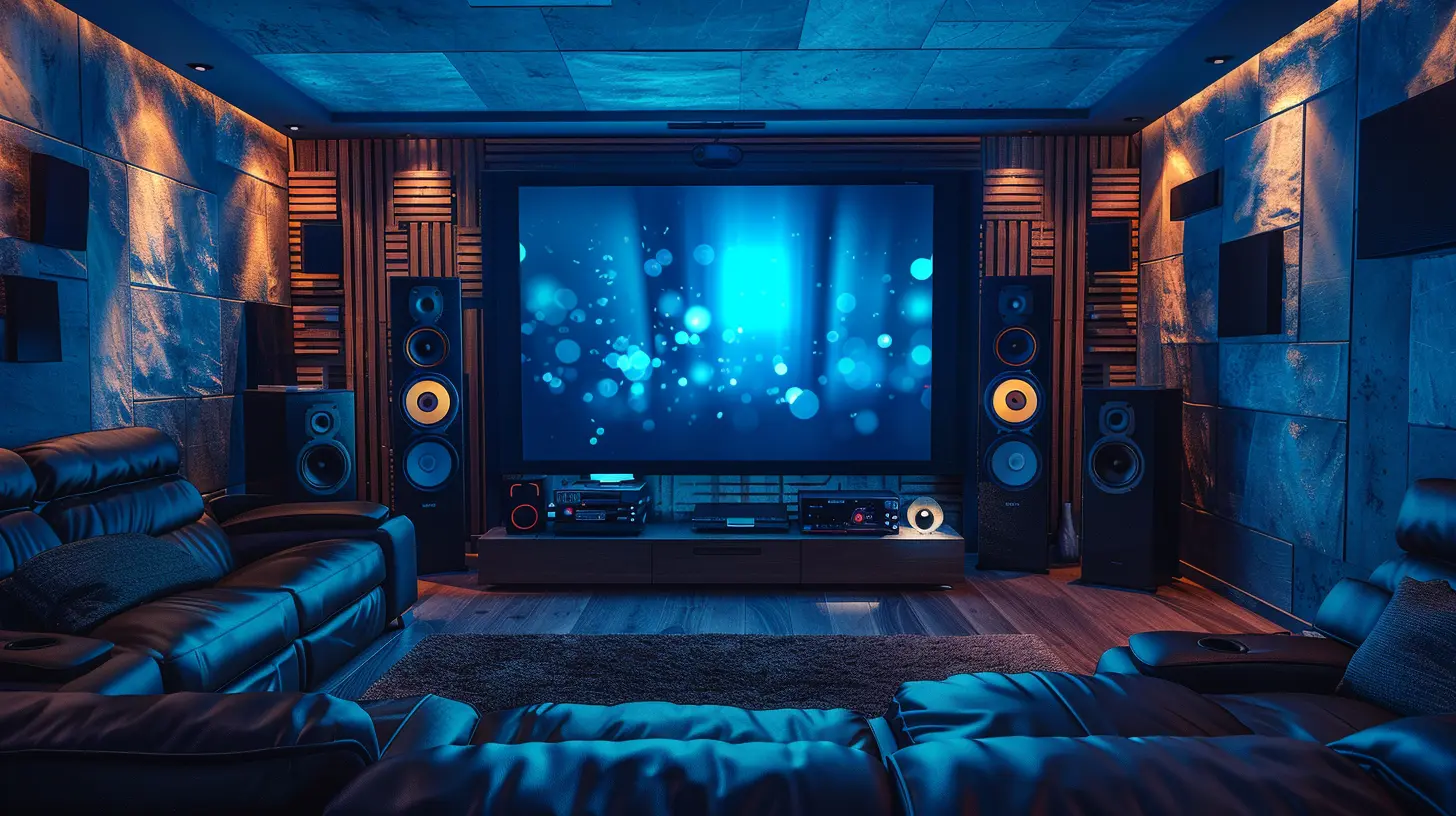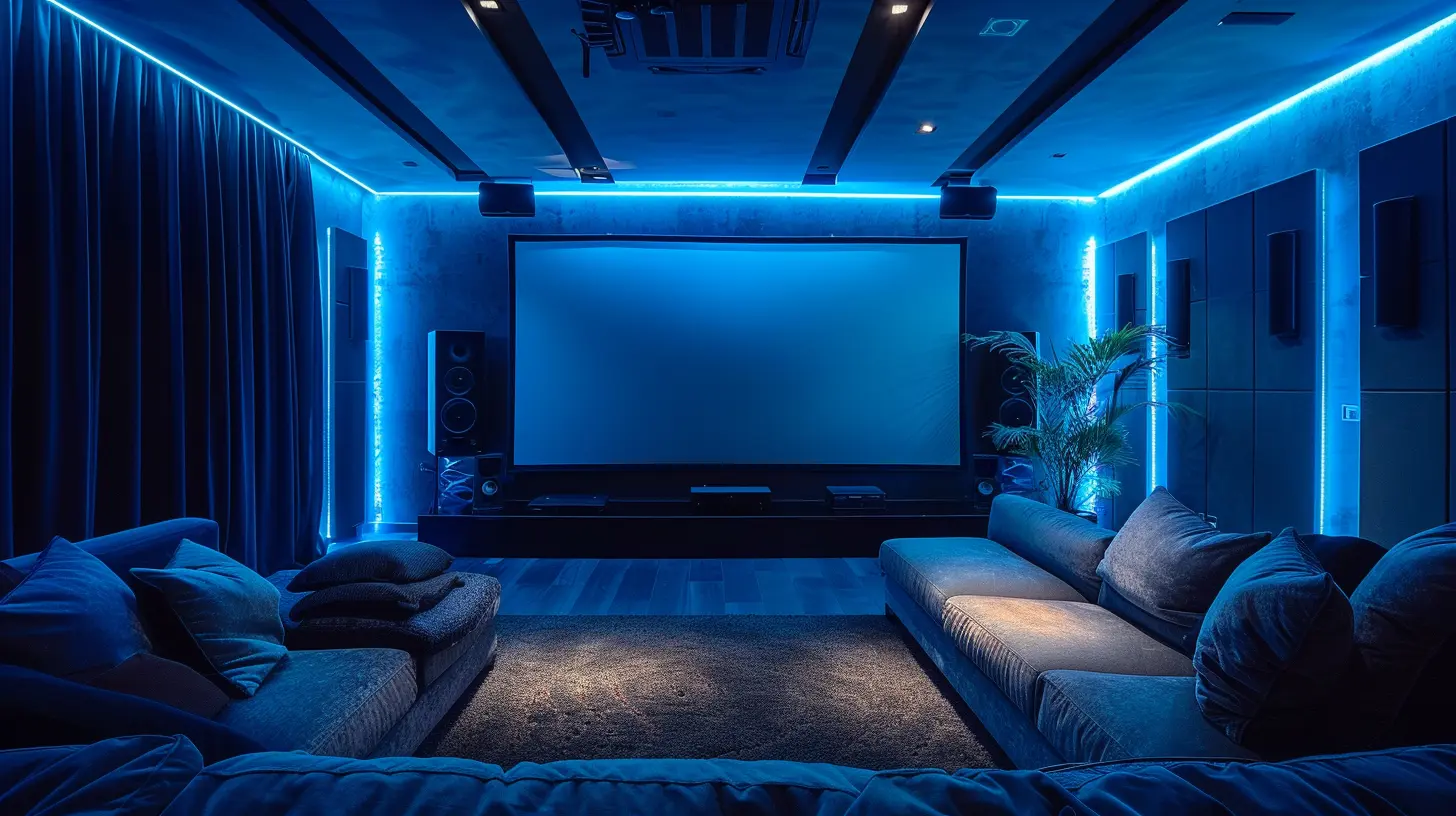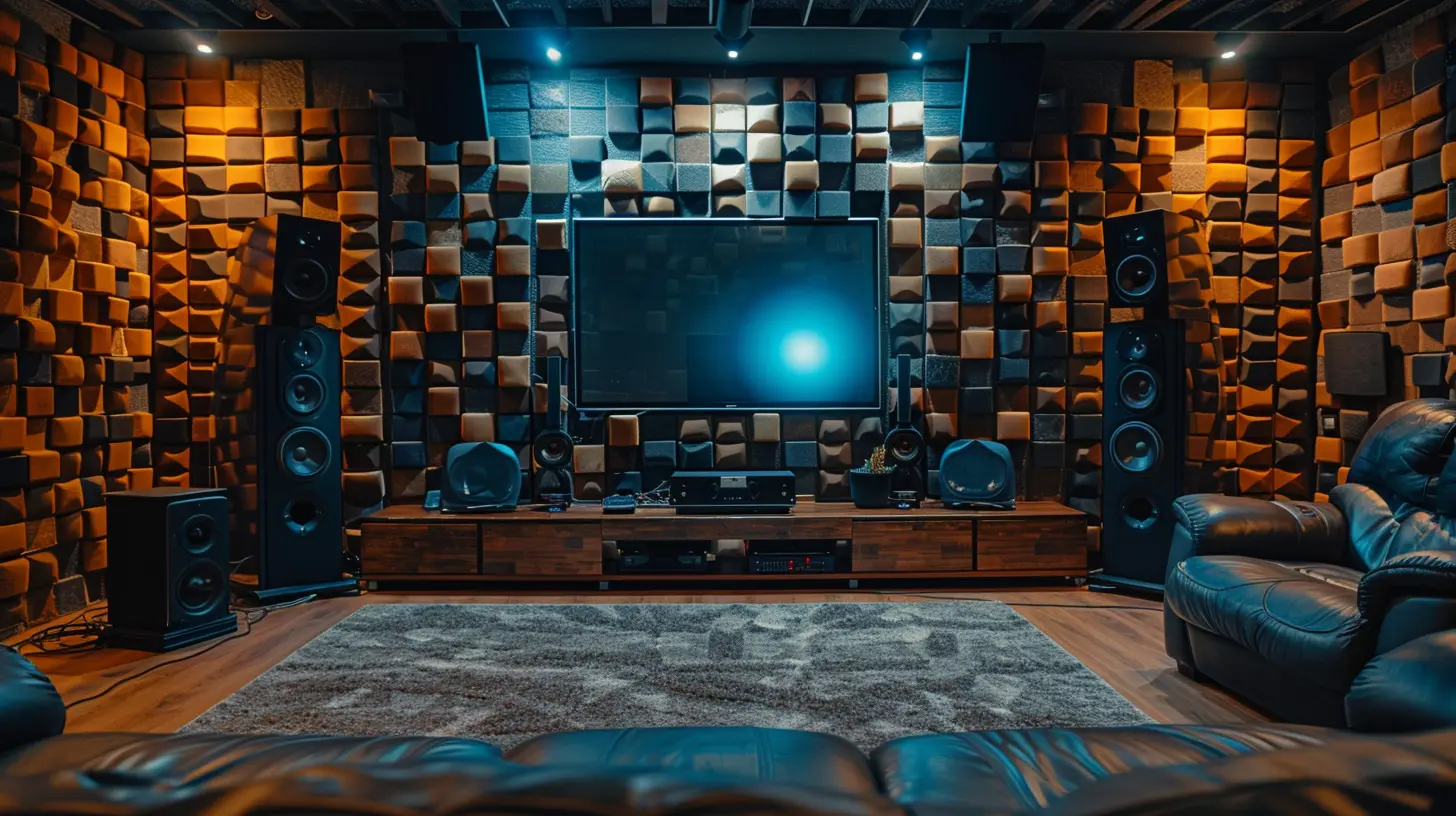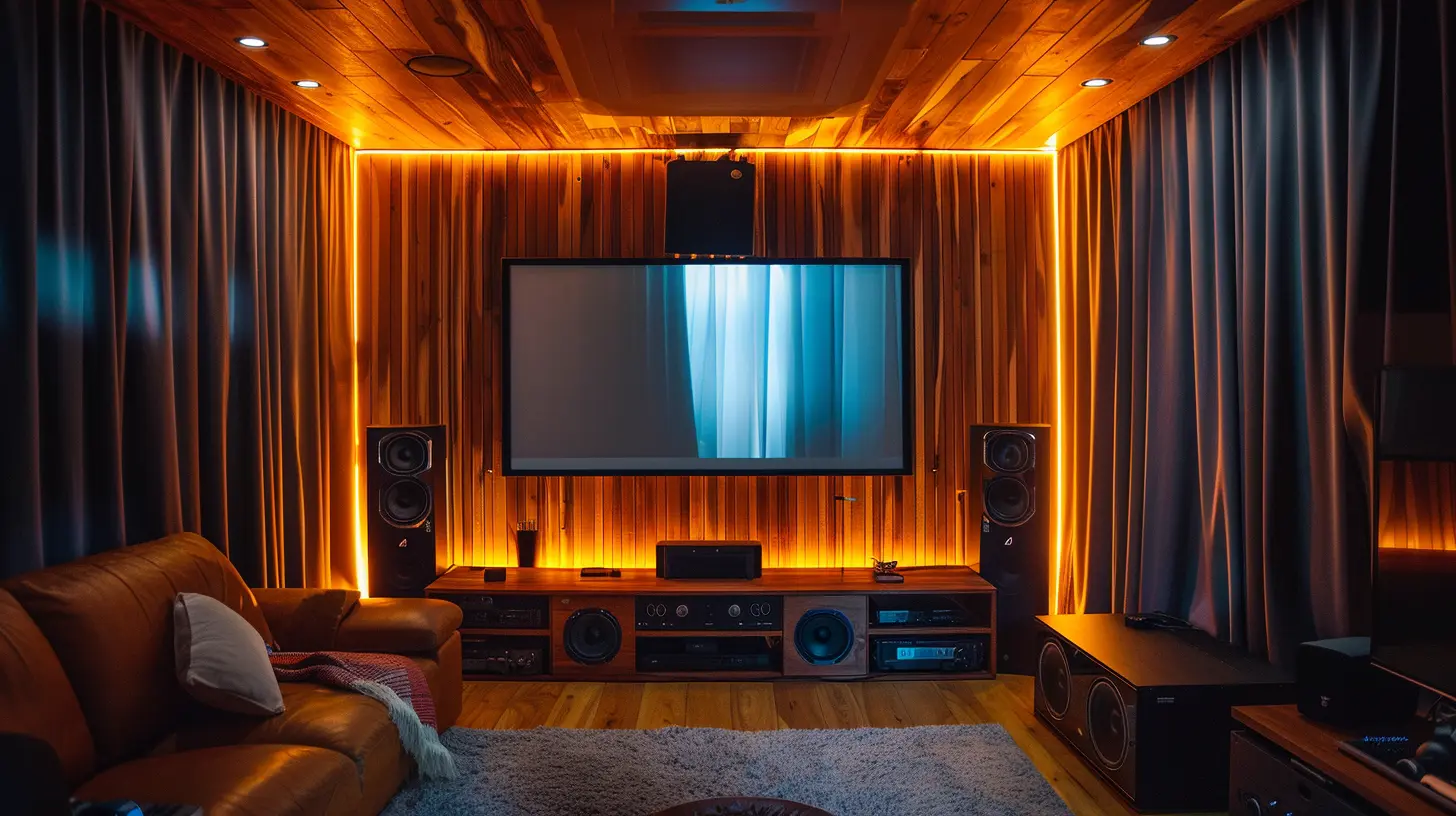Soundproofing Your Home Theater: Tips for a Better Audio Experience
3 July 2025
Creating the ultimate home theater isn't just about investing in a massive screen or the latest surround sound system. It's also about controlling sound—both what stays in and what stays out. If you’ve ever had to crank up the volume only to still hear the dishwasher humming in the background or found yourself constantly apologizing to your neighbors for the late-night action movie marathon, then it's time to think about soundproofing.
In this guide, we’re diving deep into everything you need to know about soundproofing your home theater. We'll break down how sound works in your space, the materials that make a difference, and practical tips you can apply—even if you're on a budget. Ready to build a sonic fortress? Let’s get into it.
Why Soundproofing Matters in a Home Theater
So, why should you care about soundproofing? Because great audio shouldn't have to compete with barking dogs, traffic outside, or footsteps from the floor above. Soundproofing serves two purposes:1. Keeps external noise out – so you don’t miss that crucial plot twist.
2. Keeps internal noise in – so your neighbors aren’t wondering if there’s a war happening in your living room.
Think of it like wearing noise-canceling headphones, but for your entire room. It creates an audio bubble that'll make your movie nights, gaming sessions, or music binges feel so much more immersive.
Understanding the Basics of Sound
Before throwing up foam panels all over your walls, it's worth understanding how sound travels. Sound moves in waves—vibrations that travel through air, solids, and liquids. It’s sneaky. It can bounce off hard surfaces like walls, ceilings, and floors or seep through tiny gaps under doors and around windows.There are two key types of sound to consider:
- Airborne Sound – Think voices, music, or street noise. These travel through the air and weak spots in the structure.
- Structure-Borne Sound – These are vibrations caused by things like subwoofers or stomping feet, which transfer through walls, floors, and ceilings.
To effectively soundproof, you need to address both.
Step-by-Step Soundproofing Tips for Your Home Theater
1. Choose the Right Room
This may seem basic, but your success starts with picking a good location. Ideally, choose a room without shared walls (especially exterior ones). A basement is a great option—they're already partially surrounded by concrete, which is excellent for blocking sound.If remodeling is on the table, avoid rooms with lots of windows or hollow-core doors.
2. Seal All Gaps and Cracks
Sound loves to travel through the tiniest of spaces. Look closely at your doors, electrical outlets, windows, and vents.- Use weatherstripping on doors and windows.
- Apply acoustic caulk around light fixtures, baseboards, and wall gaps.
- Add door sweeps to block under-door noise leaks.
Think of it like patching leaks in a boat. A small hole may seem harmless until you're neck-deep in water—or in this case, unwanted noise.
3. Upgrade Your Door
Standard interior doors are typically hollow and do very little to block sound. Upgrading to a solid-core door can make a massive difference. It’s heavier and denser, which means it blocks more noise.And don’t stop there—remember to seal the edges with acoustic seals and add a bottom door sweep.
4. Double Up the Drywall
Walls are one of the main culprits of sound transfer. If you're renovating or building a dedicated theater space, consider adding a second layer of drywall with a damping compound like Green Glue in between. This acts like a sound sandwich—adding mass and reducing vibration.If that’s too much work, you can add mass loaded vinyl (MLV) behind your existing drywall. It's like giving your wall a soundproof vest.
5. Insulate the Walls and Ceiling
If you can open up your walls or ceiling, stuff them with acoustic insulation. Unlike standard fiberglass insulation, acoustic insulation like Rockwool or Owens Corning QuietZone is denser and absorbs more sound.Even if you’re not doing major construction, look into acoustic ceiling tiles to reduce the echo and soak up airborne noise.
6. Add Soundproofing Panels and Foam
Let’s talk treatment. Sure, you’ve probably seen those pyramid-shaped foam panels online, but do they work?Yes, but with a catch.
Acoustic foam is great for absorbing echoes and improving sound quality inside the room. However, it won’t do much to block sound from entering or leaving.
To get true soundproofing, combine foam with other materials like:
- Bass traps – These go in corners and help manage low-frequency booms.
- Diffusers – Instead of just absorbing, they scatter sound for a more natural soundexperience.
- Fabric-wrapped panels – Stylish and functional, these absorb a wide range of frequencies.
7. Don’t Forget the Floor
Floors are often overlooked, but they play a big role in sound travel.- Use thick carpets or area rugs with cushy pads underneath.
- Consider soundproof underlayment beneath hardwood or laminate floors.
- Add floor mats under subwoofers and speakers to prevent vibration transfer.
It’s like giving your room a soft, sound-absorbing blanket.
8. Window Woes? Try These Fixes
Windows are notoriously bad at blocking sound. Here’s how to tame them:- Add thick, heavy blackout curtains or dedicated acoustic drapes.
- Use window inserts – acrylic panels that create an extra barrier.
- Replace with double-glazed or laminated glass if you’re doing a deeper renovation.
Still hearing noise? Layer it up. More mass = less sound.
9. Use Furniture Strategically
Believe it or not, furniture can help soundproof your space.- Bookshelves filled with books make great sound barriers.
- Large sofas and padded chairs absorb sound.
- Wall-mounted décor can act as mini sound diffusers.
It’s like converting your home theater into a sponge for sound.
Tips for Better In-Room Acoustics
Soundproofing is one half of the equation. The other half? Making your audio sound incredible inside the room.Here’s what helps:
- Speaker placement – Don’t hug the walls. Pull speakers out and aim them toward the main seating area.
- Reflective surfaces – Avoid lots of glass or hard tile. These bounce sound awkwardly.
- Symmetry matters – Try to keep things balanced. You don’t want all your soft surfaces on one side and reflective ones on the other.
Treat your home theater like a musical instrument—its shape and materials impact the sound it produces.
Budget-Friendly Hacks (When You're Not Made of Money)
Want better sound without spending a fortune? Here are a few clever tricks:- Use egg cartons or moving blankets temporarily (not pretty, but functional).
- Buy second-hand acoustic panels online.
- Use DIY sound traps with mineral wool and fabric.
- Layer thick curtains over walls—not just windows.
Every little bit helps, and remember: even modest steps can seriously improve your listening experience.
Final Thoughts
Soundproofing your home theater is about creating a sanctuary for sound—a place where every detail, from the softest whisper to the loudest explosion, is heard just the way it was meant to be. Whether you're a cinephile, gamer, or audiophile, the right soundproofing transforms your setup from average to extraordinary.You don’t have to take a wrecking ball to your living room. By combining smart design, the right materials, and a bit of creativity, you can turn any room into an acoustic dream. So go on, be the master of your movie domain—and let the only thing shaking be the surround sound, not the neighbors banging on your wall.
all images in this post were generated using AI tools
Category:
Home EntertainmentAuthor:

John Peterson
Discussion
rate this article
2 comments
Eloise McCord
Transform your home theater from echo chamber to audio oasis! Because nothing ruins a good movie like your neighbor’s 2 a.m. karaoke concert. 🎤😂
November 9, 2025 at 12:56 PM

John Peterson
Absolutely! Soundproofing is key to enjoying immersive audio without distractions. Our tips will help you create that perfect audio oasis! 🎶🛠️
Pierce Reed
Great insights on soundproofing! Implementing these tips can truly enhance the audio experience in any home theater setup. Thank you for sharing!
July 8, 2025 at 3:26 AM

John Peterson
Thank you for your kind words! I'm glad you found the tips helpful for enhancing your home theater experience. Enjoy your soundproofing journey!


